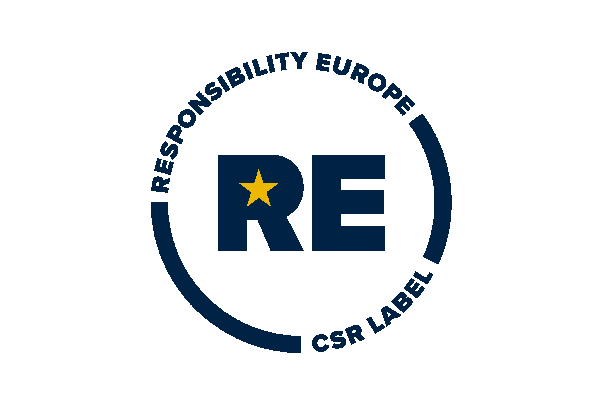ABOUT THE CLIENT
- The client is an international actor in the financial sector with public and private stakeholders, created and established in Luxembourg since the beginning of the 1990s.
- The client is in a modern office building located in one of the most attractive business areas in Luxembourg.
- The company benefits from a stable economic situation with a good market reputation and reputation as an employer.
THE CONTEXT
The client’s teams have been working remotely during the pandemic and the organisation wants to continue offering their employees a hybrid work model with 2 days at home and 3 days at the office depending on function and residency. Further, their offices benefit from an easy access to the motorway, public transport connections as well as restaurants and commercial shops in the nearby surroundings.
The client was used to working in silos and closed offices but has now taken on the challenge to move towards a more collaborative approach in a hybrid choice-based workplace setting with – to some extent – flexible seating in smaller open office spaces.
With the experience of working from home throughout the pandemic, today the client is looking to modernise and adapt a concept of New Ways of Working:
To evaluate the specific needs
of the employees both at the office and at home
To understand what makes
a workplace and its office space attractive
To analyse
market and industry trends
In order to transform the ways of working, to optimise office space and create an office where employees love to go to work, the following challenges and previous ways of working had to be tackled:
- Conservative way of working with general resistance towards change,
- Hierarchical workplace (the leader has the corner office),
- Moving from single or two-person offices to small open-spaces,
- Very siloed way of working,
- Quickly organic grown organisation without strong cultural anchoring,
- Change fatigue within departments due to frequent past organisational changes.
MINDFOREST'S MISSION
MindForest accompanied the client in the definition of their new hybrid workplace strategy accommodating the various aspects affected for the evolution of their interpretation of New Ways of Working (NWoW).
MindForest’s main objectives for this mission were to:
Analyse and understand
the needs of the employees working in the different departments
Facilitate and co-create
the new flexible hybrid workplace strategy concept without compromising efficacy and comfort
Handle resistance towards
the concept of New Ways of Working (mindset, tools, methods and workspace setup)
Ensure understanding
of a hybrid, flexible Workplace Strategy (to increase buy-in)
Encourage and introduce
a more collaborative approach within the organisation
TOOLS, METHODS & ACTIONS
Ensure that the new workplace strategy represents the organisation and its desired image
Workplace audit to understand the gap between the current status-quo and the desired new working model outcome
Change Curve Behaviours Analysis to break down the understanding of and barriers towards “open space” and “flex desk” (new versions vs. old-fashioned “broker” style)
Promote a more modern workplace based on the choice-based concept and a hybrid working schedule
Highlight opportunities and constraints within the current location
Design Thinking to introduce a more collaborative approach within the organisation and get employees out of their comfort zone
Change Resistance Mitigation to work with resistance to change arising throughout the process
Interviews and surveys to identify current constraints to move towards a flexible workplace strategy model
Digital Moodboards to ensure all participants could express themselves creatively during and between sessions
Collective intelligence within the working groups to ensure that the new workplace strategy represents the organisation and its desired image
Impact analysis to consult on the general themes within the scope of NWoW but not within workplace strategy necessarily (culture, digitalisation, HR and training, workflows, sustainability, etc.)
THE PROJECT OUTCOME
- Space optimisation
- Ensuring a logical approach to workflows and digitalisation
- Highlighting opportunities and constraints within the workplace
- Understanding employee needs and worries
- Encouraging a broader understanding of NWoW and not only workplace strategy
- Thanks to cross-functional and cross-hierarchical working groups an increased creative thinking was established within the organisation
- Indirect involvement outside working groups thanks to a ripple effect
- Increased understanding and buy-in
- Reduced resistance
- Understanding of the impact of NWoW and hybrid working on cultural and organisational elements
Dialogue on NWoW across functions
Co-construction between facility management and staff
THE MAIN SUCCESS FACTORS
EMPLOYEE INVOLVEMENT
which encouraged staff to discuss across functions, express themselves and consider the current status of daily work as well as the potential impact of a new workplace strategy.
EFFICIENT GOVERNANCE
which allowed for the immediate combining of decision-making, action implementation and monitoring.
REGULAR COMMUNICATION
between the client and MindForest to ensure all challenges were identified and all aspects were considered throughout the course of the project.
TRUSTWORTHY AND TRANSPARENT COLLABORATION
based on regular exchanges to ensure the right definition of the scope, and to reframe where necessary and to give systematic advice.
SUITABLE, TAILORED METHODS
before during and after each workshop. The use of Design Thinking was a real success and made the stakeholders involved gain time as well as an overview of the workplace concept and its advantages and challenges.
RESULT-ORIENTED AND FOCUSED APPROACH
to ensure the best possible results within a very short period due to meet tight deadlines before final delivery to top management.




